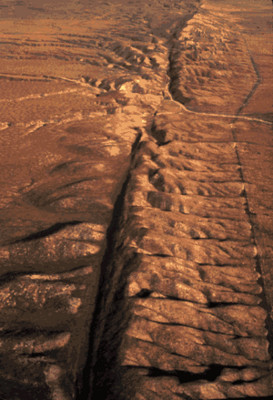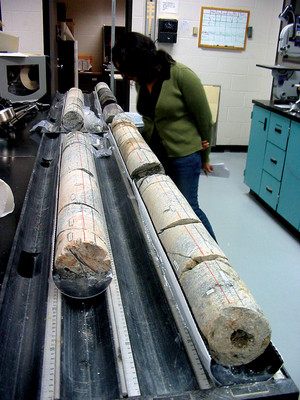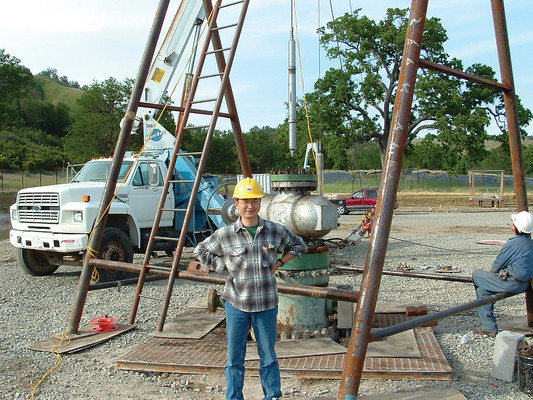
by Nicole Branan Thursday, January 5, 2012

San Andreas Fault U.S. Geological Survey (USGS): photographer Robert E. Wallace, USGS.

Researchers drilled the San Andreas Fault and extracted core samples that are now being studied. John I. Garver, National Science Foundation

Studying the San Andreas Fault, Fenglin Niu and colleagues recently found a way to help determine that an earthquake is coming. Fenglin Niu
Earthquakes strike out of nowhere — one minute everything is perfectly calm, and the next minute, the ground shakes violently and buildings crumple. However, many seemingly sudden seismic events are actually preceded by a multitude of creeping changes underground. Detecting and interpreting these changes would help forecast earthquakes, but that detection has proven difficult, partly because scientists don’t yet fully understand the complex chain of events that precipitates a quake. Now a team of researchers may have discovered some hidden clues that may help them identify impending quakes.
Fenglin Niu of Rice University in Houston, Texas, and his colleagues found a way to detect stress changes along the San Andreas Fault in California — the world’s most studied fault — by measuring how fast seismic waves traveled through the deep rock. A few hours before two separate earthquakes rumbled along the fault, the researchers saw a decrease in seismic wave speed that they think was triggered by stress changes leading up to the quakes.
The team designed instruments capable of sending and receiving seismic waves through the ground at depths of about one kilometer. Scientists have shown that the speed with which seismic waves travel through rock changes with the level of stress. That’s because the increased pressure squeezes tiny cracks in the rock together, Niu says. Therefore, measuring seismic wave speed “could, in principle, lead to a stress meter,” he adds. So he and his colleagues dropped their seismic wave generator and the receiver into two adjacent boreholes at the San Andreas Fault Observatory at Depth (SAFOD), sent seismic waves from one well to the other and measured their travel time continuously for two months. The researchers saw that seismic wave speed closely followed variations in the surrounding air pressure in the atmosphere, which puts stress on the rock. “The higher the air pressure was, the shorter was the travel time,” Niu says.
A few weeks into the experiment, seismic waves suddenly slowed down, and 10 hours later, a magnitude-3 earthquake shook the ground. The same happened a few days later, two hours before a magnitude-1 earthquake struck. These drops in seismic wave speed “may be related to pre-rupture stress-induced changes in crack properties,” the team wrote in Nature July 10.
William Ellsworth of the U.S. Geological Survey in Menlo Park, Calif., who is one of the co-principal investigators of the SAFOD project and who was not involved in the work, cautions that the team’s observations still need to be validated. “They have a testable hypothesis, but at this point it is untested,” he says. “There is still some work to be done to understand what the signals mean.” Still, finding a way to measure seismic wave velocities over short distances as deep as a kilometer is a significant technological advance, he says.
Niu acknowledges that more studies are needed, but says that the method “could form the basis for an early warning system for impending quakes.” He and his team plan to conduct a long-term monitoring study at the two SAFOD wells and are designing an experiment to measure seismic wave speed changes over a larger area. They also plan to conduct the same type of experiments at different fault systems.
© 2008-2021. All rights reserved. Any copying, redistribution or retransmission of any of the contents of this service without the expressed written permission of the American Geosciences Institute is expressly prohibited. Click here for all copyright requests.